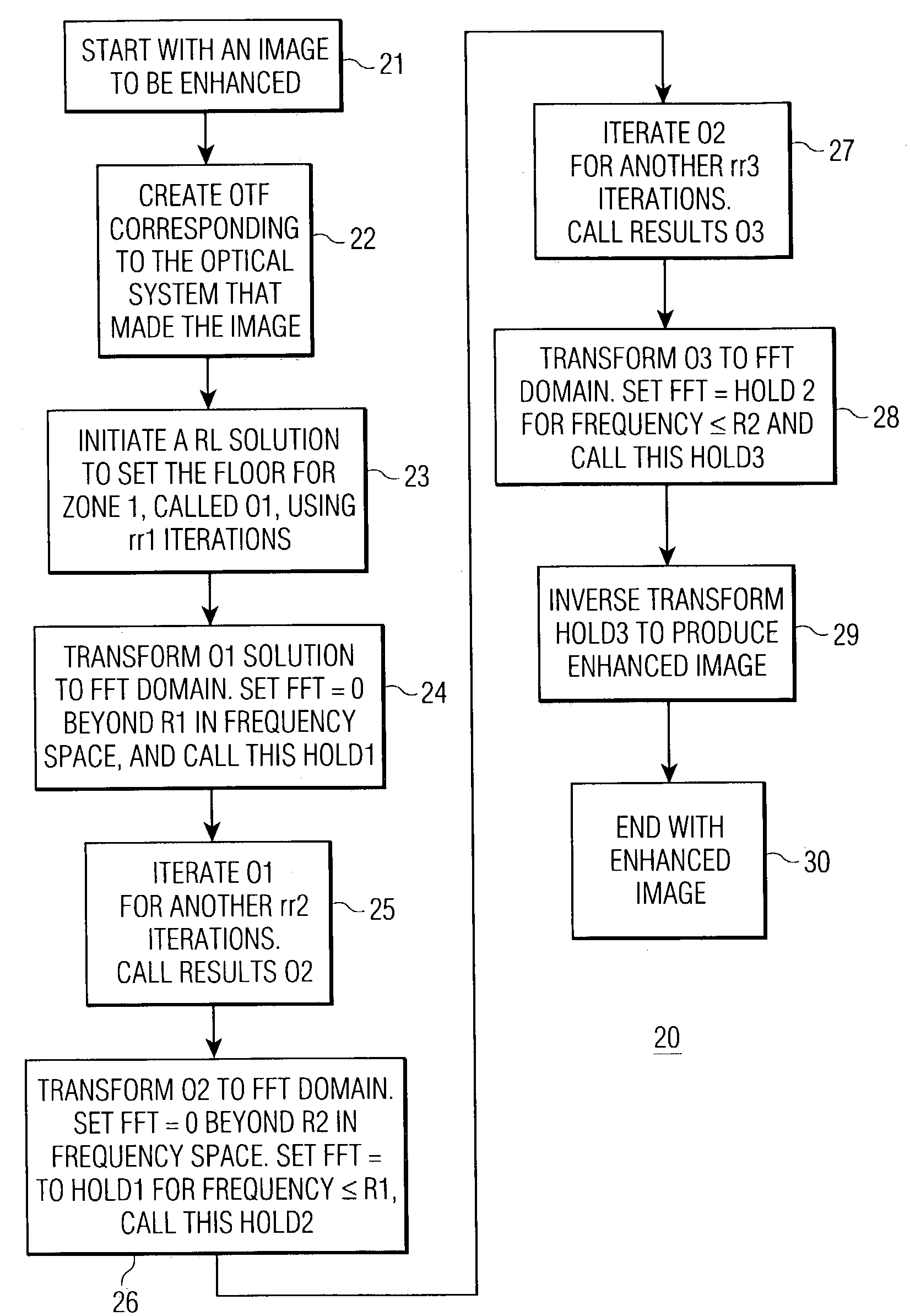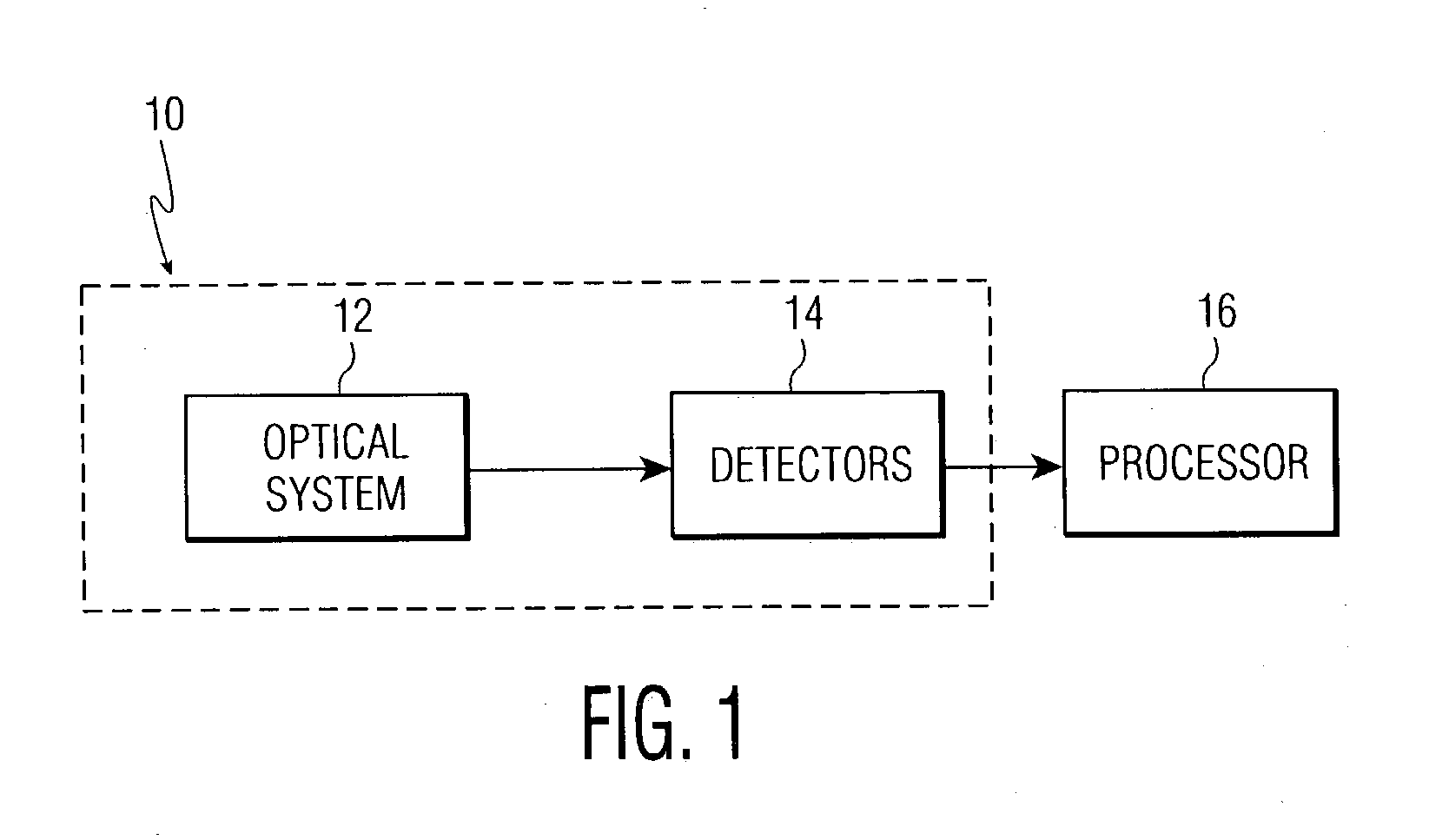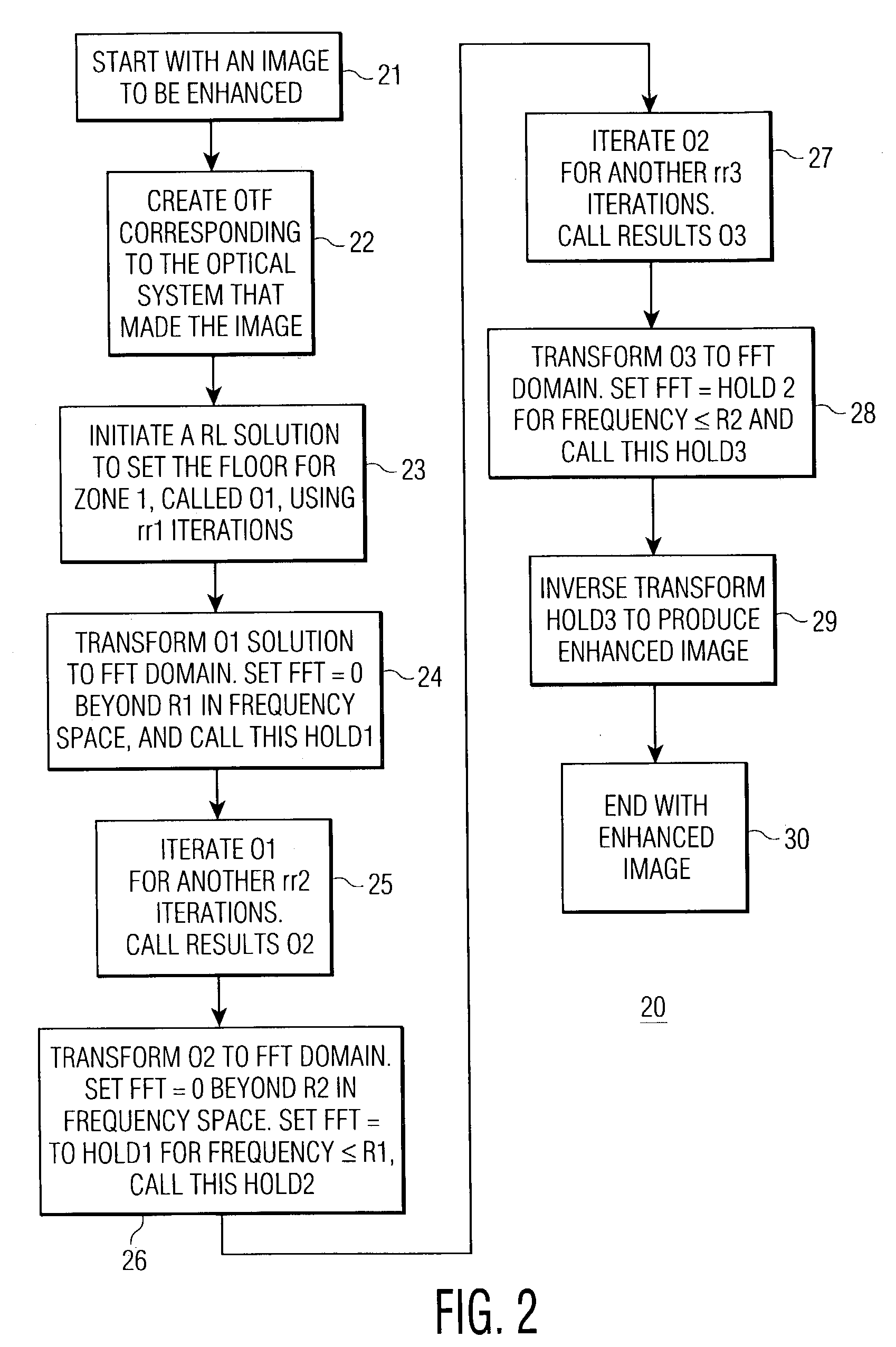Methods for image enhancement
- Summary
- Abstract
- Description
- Claims
- Application Information
AI Technical Summary
Benefits of technology
Problems solved by technology
Method used
Image
Examples
Embodiment Construction
[0021]The present invention is directed to a method of improving radiometric accuracy of objects within a scene, by enhancing all the objects within the image, regardless of size, such that the radiometric errors of the small objects are minimized. The method may be applied to general images taken of a scene by a Rayleigh sampled system, where the truth of the scene is not known.
[0022]It will be appreciated that many earth-viewing imaging sensors flown in outer space are Rayleigh sampled systems. The present invention, however, is not limited to enhancing images produced by a Rayleigh sampled system, but may be applied to images produced by other types of sampling systems (over sampled, or under sampled).
[0023]As will be explained, the present invention divides an image of a scene into three frequency zones. A Richardson and Lucy (RL) algorithm iterates each frequency zone of the image and optimizes each zone individually. The RL algorithm first iterates the lower spatial frequency ...
PUM
 Login to View More
Login to View More Abstract
Description
Claims
Application Information
 Login to View More
Login to View More - R&D
- Intellectual Property
- Life Sciences
- Materials
- Tech Scout
- Unparalleled Data Quality
- Higher Quality Content
- 60% Fewer Hallucinations
Browse by: Latest US Patents, China's latest patents, Technical Efficacy Thesaurus, Application Domain, Technology Topic, Popular Technical Reports.
© 2025 PatSnap. All rights reserved.Legal|Privacy policy|Modern Slavery Act Transparency Statement|Sitemap|About US| Contact US: help@patsnap.com



